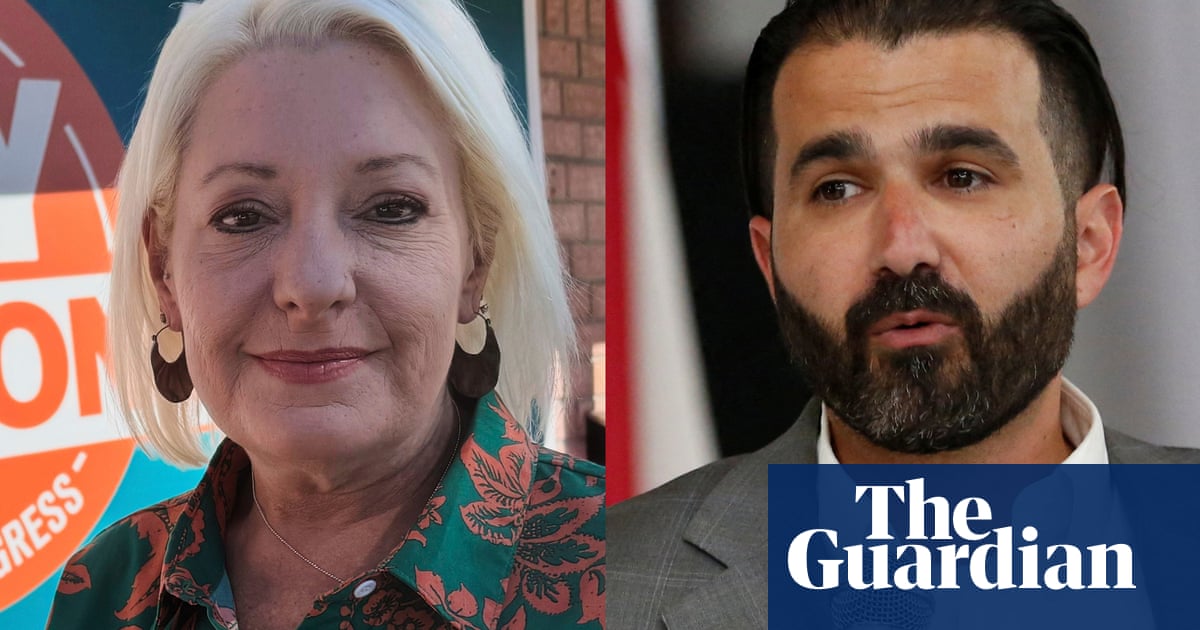Democrats in Florida believe that strong performances in two congressional races this month have erected signposts towards restoring its status as a crucial swing state.
It might appear a lofty conviction given noDemocratic candidatehas won a statewide election since 2018, and any remaining notion of Florida being purple was dispelled byDonald Trump’s victory overKamala Harrisby more than 13 percentage points in November.
Yet hope has emerged alongside some remarkable statistics from the 1 April special elections in traditionally strong Republican districts, both of which theDemocratic candidates still lost, but by significantly narrower margins than five months ago.
In the House seat vacated by Matt Gaetz, Trump’sfailed pickfor attorney general, Democratic candidate Gay Valimont doubled her tally of votes from November. She halved the Republican majority, and flipped Escambia county blue “for the first time in living memory”, in the words of state Democratic party chair Nikki Fried.
Florida’s westernmost county, notable for its large population of veterans and 25,000 civilian and military employees at the Pensacola naval air station, hasalmost twice as many registered Republican votersas Democrats. The last time it voted for a Democratic candidate was in the 2006 senate election won by Bill Nelson.
A similar story played out further east, where a special election to replace Michael Waltz, Trump’s new national security adviser, resulted in Democratic candidate Josh Weil turning November’s 33% Republican margin of victory into one of little more than 13%.
Daytona Beach and DeLand, two of the larger cities in the district, have also seensizeable anti-Trump demonstrationsin recent weeks, reflecting growing discontent among voters for the early direction of his second administration.
But Fried, and the candidates themselves, believe the upswing in Democratic support in districts that were previously ruby red was much more than a simple protest vote. Instead, they feel it can help model the party’sFloridacampaigns, especially in Republican strongholds, for the 2026 midterms barely a year and a half away.
“Florida Democrats just put the Republican party on notice. There are no safe seats in Florida in 2026,” Fried told reporters on election night.
Valimont, agun violence prevention activistwith Moms Demand Action who turned to politics after losing her husband and son to illness, told the Guardian that her hyper-local campaign focused in large part on winning over Republican voters who had previously automatically voted for Gaetz and showing how Trump policies will hurt them.
“It would not have benefited me at all to haveAOC or Bernie Sandersshow up here, or any of that other stuff,” she said. “That’s not what the people here want to hear. They want to hear that somebody’s going to take care of what’s happening to their wallet.
“Obviously it did not hurt that Trump was blowing everything up, around every corner, making people in his own party question their votes. Here, the big opportunity was talking to veterans about what’s going on. Healthcare is a human right, especially for our vets, and they’re just about to destroy the department of veterans affairs.”
Florida has not been considered a swing state since Barack Obama won the state twice. Nelson, its most recent Democratic senator, lost his seat to Republican former governor Rick Scott in 2018, and current governor Ron DeSantis was re-elected in 2022 by almost 20%, the largest margin for a Florida gubernatorial race in four decades.
The Republican supermajority in both state chambers has since rubber-stamped almost every element of DeSantis’s hard-right policy agenda, passing restrictive new laws covering everything fromimmigrationtoeducationandabortion, cracking down oncivil rights, theLGBTQ+ communityand virtuallynon-existent voter fraud.
Valimont said the party can learn from her experiences in perceived “red” counties such as Escambia.
“I’m saying we need qualified people who are deeply embedded in their hometowns to give a shit about their district and that’s how people relate to me,” she said.
“They stopped seeing me eventually, some people at least, others not so much, as ‘the Democrat’ and started seeing me as a candidate that wants to represent them, that is talking about the issues that they care about.
“I’m a fantastic candidate, I don’t mind telling you that,” she added. “I just happened to be running in the hardest freaking place in the world for a Democrat to run.”
Nick Sakhnovsky, chair of the Democratic party of Volusia county, said Weil,an Orlando school teacher, was a similarly solid candidate who appealed to a significant number of Republican and independent voters in the sixth congressional district.
He said a surprise victory might have been achievable without a late surge of heavyweight support for their candidate Randy Fine from senior Republican officials, including Trump, who appeared at two tele-rallies.
“Before election day proper there’s no doubt that, at least in Volusia county and quite possibly the district, Democrats would have won, because the numbers were very strong, especially compared to November,” he said.
“If there was any single reason, it definitely would be angst over what was happening at the national level. There was so much shock and awe coming out of the White House between January and March. There was clear movement and the Democrat was able to flip the no party affiliation (NPA) vote, which theRepublicanswon in the general election 60-40, to 40-60 in April.”
Sakhnovsky said he hoped state party officials would take notice of the two congressional races and back future candidates and campaigns with “resources and training, the kind of precinct level committee people that we need to prepare ourselves for next year”.
He said it was also important to identify and court potential supporters, including young voters, Hispanics, African Americans and independents, to build on the momentum of this month’s elections.
Sakhnovsky pointed to the protests in Volusia in recent weeks, which were not organized by Democratic-affiliated groups, as another potential pool of support.
“There’s angst created by threats to social security, and chainsaws to government services that are impacting local people,” he said.
“Activism matters, but it has to be channeled. There’s a big difference between showing up to protest and winning elections.”
